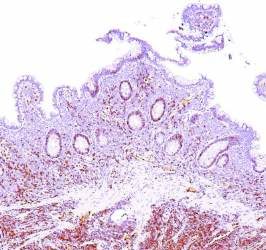AT AN FDA ADVISORY COMMITTEE MEETING
GAITHERSBURG, MD. (FRONTLINE MEDICAL NEWS) – A Food and Drug Administration advisory panel supported approval of a fluticasone and vilanterol combination to treat asthma in adults – but the majority voted against approval for adolescents, citing a need for more safety and effectiveness data in that younger population.
GlaxoSmithKline has proposed that two fixed-dose combinations, 100 mcg or 200 mcg of the inhaled corticosteroid (ICS) fluticasone with 25 mcg of the long-acting beta-agonist (LABA) vilanterol in a dry powder inhaler, be approved for maintenance treatment of asthma in patients age 12 years and older, administered once per day.
The FDA approved the 100 mcg/25 mcg dose in 2013 to treat chronic obstructive pulmonary disease; GSK markets it as Breo Ellipta. To earn an asthma indication, the company submitted data from four studies, including a large safety study that addressed safety concerns associated with LABAs in the treatment of asthma.
At the March 19 joint meeting of the FDA’s Pulmonary-Allergy Drugs Advisory Committee and Drug Safety and Risk Management Advisory Committee, the panels voted 16-4 that the efficacy and safety data supported the approval of both proposed doses in adults.
Many panelists noted the benefit of having a once-daily inhaled treatment to treat asthma, which could improve compliance. Most agreed that the efficacy data in adults provided a substantial amount of evidence that the two doses had a “clinically meaningful benefit” in adults, with beneficial effects on lung function and exacerbation rates.
But the panelists voted 19-1 that the data did not support approval in adolescents, aged 12-17 years. Members expressed uncertainty about safety in that age group, which was studied in the same trials as adults.
In addition, study data indicated that the combination’s beneficial effects were no better than fluticasone alone, panelists said. They also noted a numerical imbalance in hospitalizations among adolescents in a large safety study, and they pointed to the availability of other treatments for that age group.
Panelists voting no also said the efficacy results in adolescents were inconsistent, with “no clear trends in the positive direction,” as one panelist noted. Furthermore, there was no evidence that the combination of fluticasone and vilanterol at either dose was more effective than the ICS alone on forced expiratory volume in 1 second or asthma exacerbations.
Panelists also cautioned that the positive results in adults, who made up the majority of patients enrolled in the studies, could not be extrapolated to adolescents. Thus, there was a need for a separate safety and efficacy study in adolescents.
“At least in the adults, it offers something, perhaps the additional benefit of better compliance,” said the panel chair, Dr. Erik Swenson, professor of medicine and physiology, pulmonary and critical care medicine, University of Washington, Seattle. The combination also was superior at both doses at improving lung function and reducing exacerbations.
But among patients age 12-17 years, “there seems to be no obvious superiority and possibly inferiority against just fluticasone alone,” Dr. Swenson said.
Considering that results of large, ongoing LABA safety trials may soon become available, “I don’t feel comfortable adding a new LABA to the mix right now,” said Dr. Judith Kramer, professor emerita of medicine, Duke University, Durham, N.C., who voted against approval both for pediatric and adult patients.
Because it is taken once a day, the combination’s main advantage would be adherence, Dr. Kramer added. But “it’s not adding any major new therapeutic benefit, and there is the safety concern in the adolescents, and there may well be off-label use.”
Given longstanding concerns about serious asthma-related events associated with LABAs – particularly in pediatric and black patients – the FDA has required manufacturers to conduct postmarketing safety studies evaluating the risks of LABAs when added to an ICS.
Those studies include a GSK study of more than 11,000 patients aged 12 years and older evaluating the safety of Advair , a combination of fluticasone and the LABA salmeterol. Results from that study could be available in early 2016.
For the fluticasone-vilanterol asthma indication, GSK submitted the results of two 12-week and one 24-week lung function studies, enrolling a total of about 2,200 patients whose mean age was 44 years (about 8% were aged 12-17 years).
Another study evaluated the time to first asthma exacerbation in more than 2,000 patients, which included almost 300 patients aged 12-17 years. In that study, the risk of asthma exacerbations was reduced by about 20% among those on the combination, compared with those on fluticasone alone. There were no intubations or deaths from asthma exacerbations.
But in a subgroup analysis of patients aged 12-17 years, conducted by the FDA, the risk of asthma exacerbations was higher among those treated with fluticasone-vilanterol, compared with patients 18 years and older.
In addition, an FDA meta-analysis of asthma-related serious adverse events in the four studies found a numerical imbalance in hospitalizations among adolescents: four hospitalizations among those on the combination drug, but none on fluticasone alone.
If approved, fluticasone-vilanterol would be the first once-daily inhaled ICS/LABA combination treatment for asthma. Fluticasone (100 mcg and 200 mcg) is approved for treating asthma. Unlike the LABAs salmeterol and formoterol, however, vilanterol is not approved for use as a single agent. Vilanterol (as part of the combination product) would be the first new LABA approved for asthma in 15 years.
The FDA usually follows the recommendations of its advisory panels; a decision is expected by April 30. Panelists had no disclosures.




